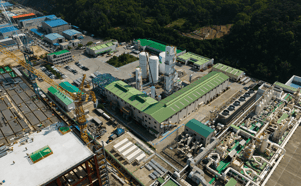Argon – the noble protector
It’s colourless, tasteless, odourless, inert, and very useful. For applications ranging from light bulbs to the growing of single silicon crystals for the semiconductor industry, argon is essential. Argon is also increasingly used in modified atmosphere packaging of foods and as an insulator in double-glazing. But it is for its metals applications that argon really shines. Argon is widely used in metals production, processing and fabrication where its role is nearly always to exclude atmospheric air from contact with metal alloys and metals – such as chromium, vanadium, silicon, titanium, aluminium and magnesium – that will either react with nitrogen contained in air, or take nitrogen into solution.
Super shield
Argon is typically used in applications where a gas more inert than nitrogen is needed, or where a very low thermal conductivity is required. It plays an important role in welding, including metal inert gas (MIG) and tungsten inert gas (TIG) processes where, as a shielding gas, it is used to exclude atmospheric air from contact with those metals that can react with oxygen and nitrogen under the higher temperatures experienced.
Argon is also the shielding gas of choice for welding alloys such as carbon and stainless steels, where small amounts of dissolved nitrogen can reduce ductility. When combined with small amounts of oxygen or carbon dioxide, argon forms a shielding gas that helps to broaden and stabilise the arc and improve bead profile. Argon is also used to prevent oxidation during die casting of hot light metal alloys, such as aluminium and magnesium alloys, for products such as car wheels.
Stirring stuff
Aside from shielding, argon’s most important metals processing applications are in steel making. Steel producers rely on the use of argon in a number of processes. For example, the wide range of ladle refining techniques used in the steel industry all involve bubbling an inert gas through the molten steel either to remove unwanted gases or to promote the carbon-oxygen reaction. Because of its inertness, argon is also used to stir the molten alloy during production to ensure that the temperature and composition are homogenous throughout the melt. Argon stirring is also used to introduce calcium or magnesium compounds into the melt to lower sulphur levels. In addition, bubbling argon through the melt is a useful way to remove unwanted gases such as nitrogen and hydrogen which affect the physical properties of steel. Argon is also used as a flotation gas for removing solid inclusions in order to produce ‘clean’ steels.
... to continue reading you must be subscribed









